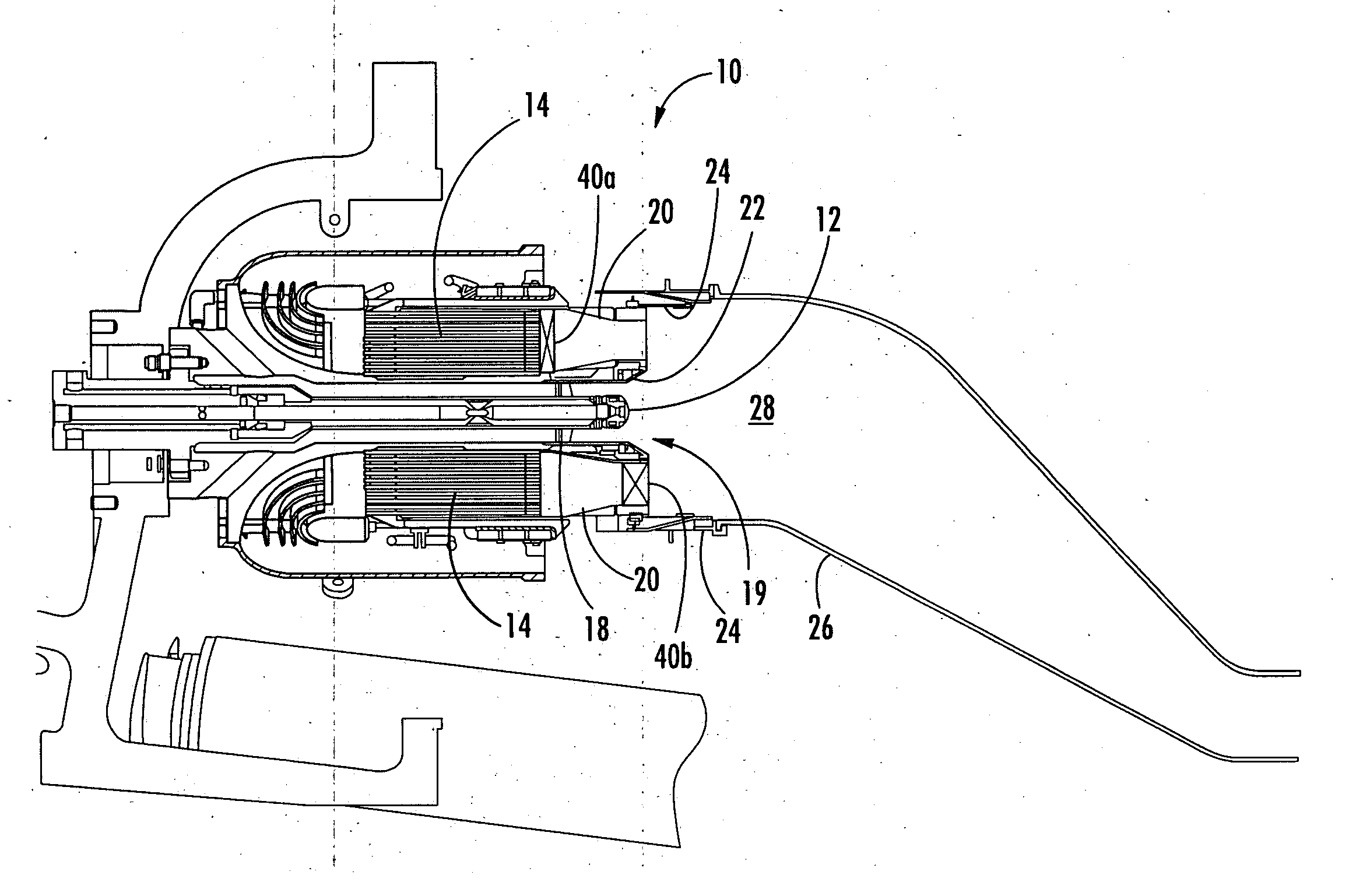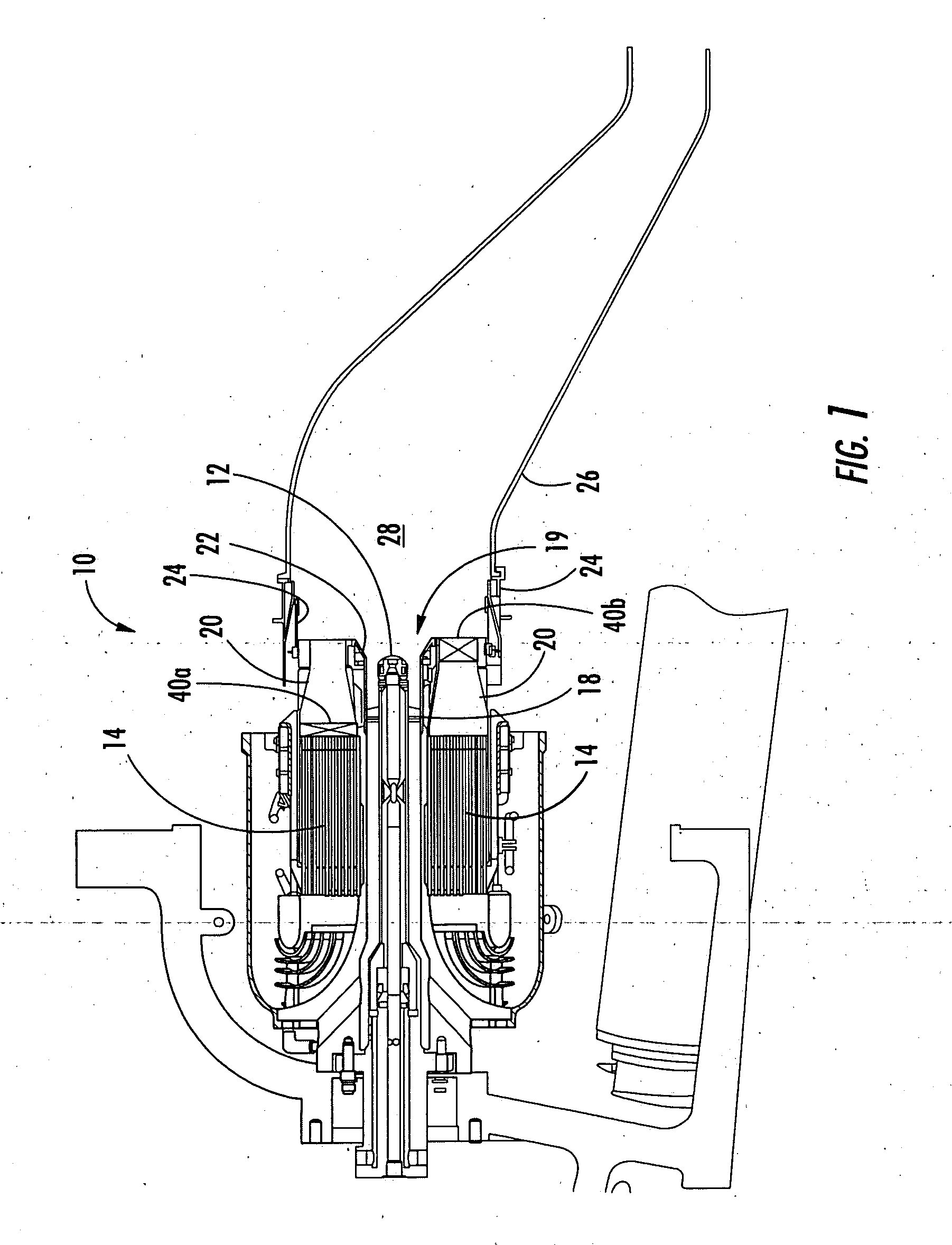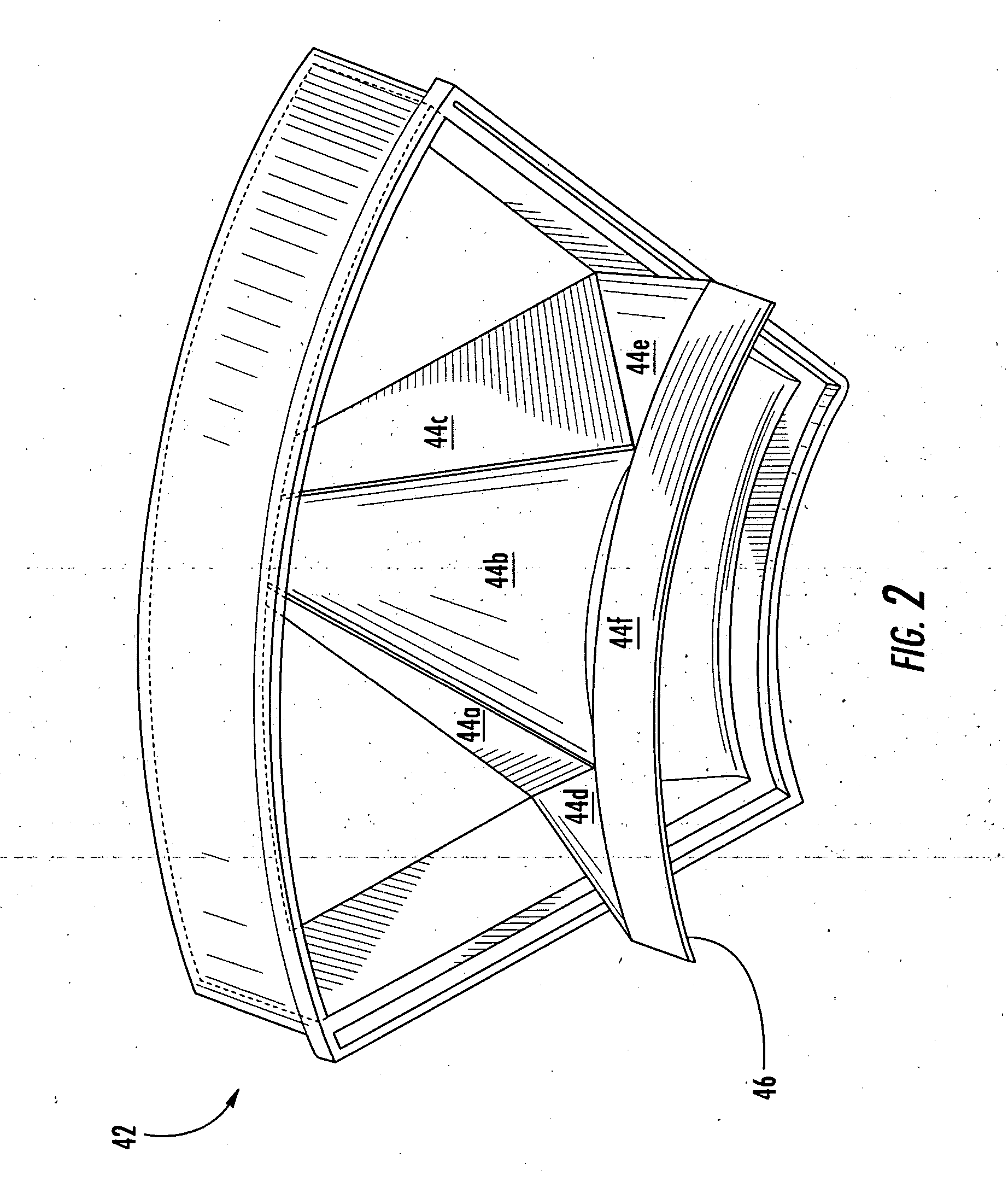Catalytic combustion system and method
a catalytic combustion and combustion system technology, applied in the ignition of the turbine/propulsion engine, engine starters, lighting and heating apparatus, etc., can solve the problems of increased co emissions, increased co emissions, and catalytic systems that typically need more time to burn co, so as to reduce carbon monoxide emissions from the turbine engine, shorten the combustion, and reduce the effect of flame length
- Summary
- Abstract
- Description
- Claims
- Application Information
AI Technical Summary
Benefits of technology
Problems solved by technology
Method used
Image
Examples
Embodiment Construction
[0018] Aspects of the present invention relate to catalytic combustion systems and methods for reducing CO emissions in turbine engines having catalytic combustion systems. Embodiments according to aspects of the invention are shown in FIGS. 1-2, but the present invention is not limited to the illustrated structure or application. Further, the following detailed description is intended only as exemplary.
[0019] A catalytic turbine engine generally has a compressor section, a catalytic combustor section and a turbine section. One example of a catalytic combustor system 10 according to aspects of the invention is shown in FIG. 1. The basic configuration of the combustor 10 can include a pilot 12 peripherally surrounded by a plurality of catalytic modules 14. In one embodiment, there can be at least six catalytic modules 14 surrounding the pilot 12, which can have an associated nozzle 13. However, there are many alternative combustor configurations. For example, a pilot can be peripher...
PUM
 Login to View More
Login to View More Abstract
Description
Claims
Application Information
 Login to View More
Login to View More - R&D
- Intellectual Property
- Life Sciences
- Materials
- Tech Scout
- Unparalleled Data Quality
- Higher Quality Content
- 60% Fewer Hallucinations
Browse by: Latest US Patents, China's latest patents, Technical Efficacy Thesaurus, Application Domain, Technology Topic, Popular Technical Reports.
© 2025 PatSnap. All rights reserved.Legal|Privacy policy|Modern Slavery Act Transparency Statement|Sitemap|About US| Contact US: help@patsnap.com



